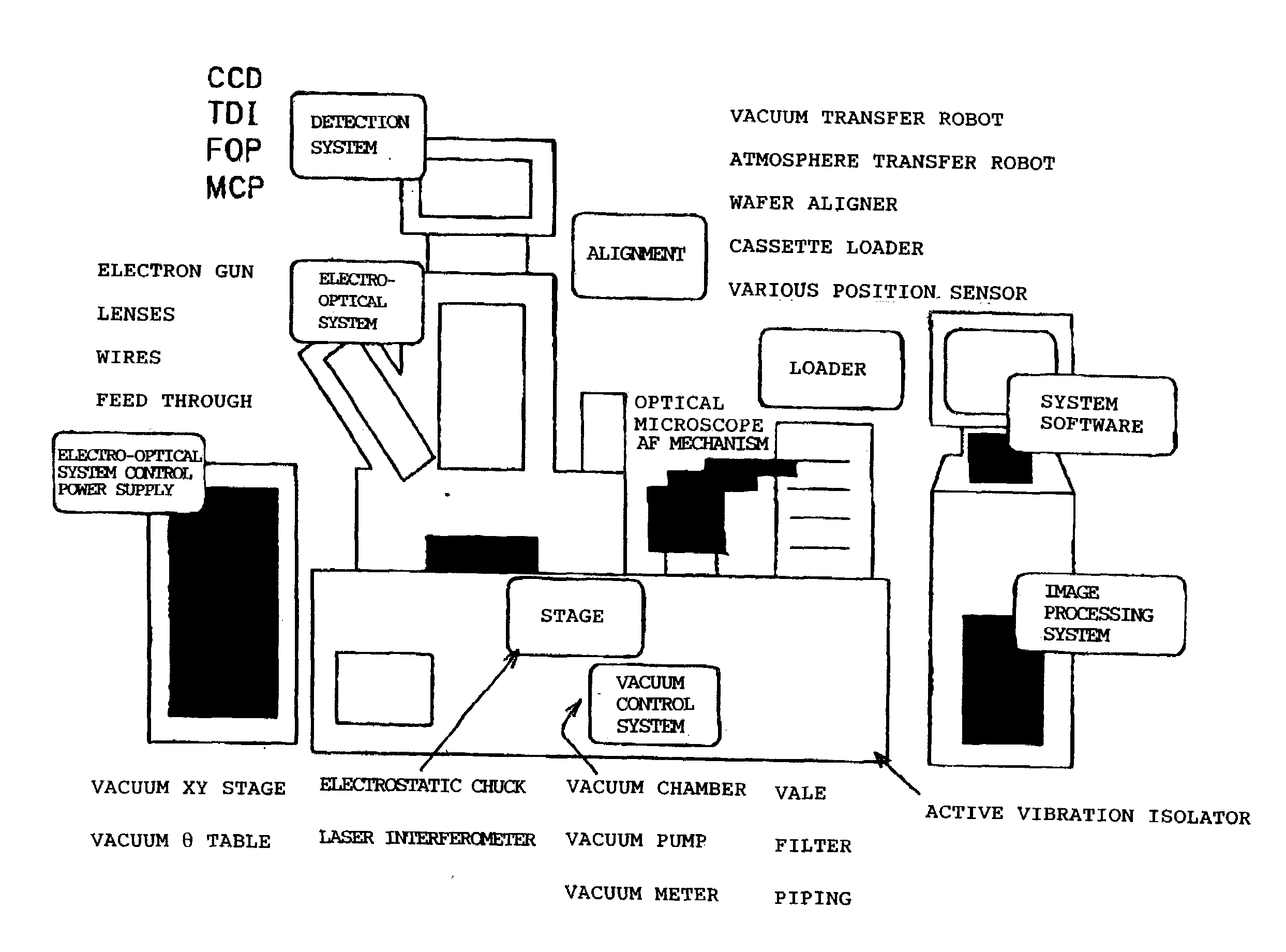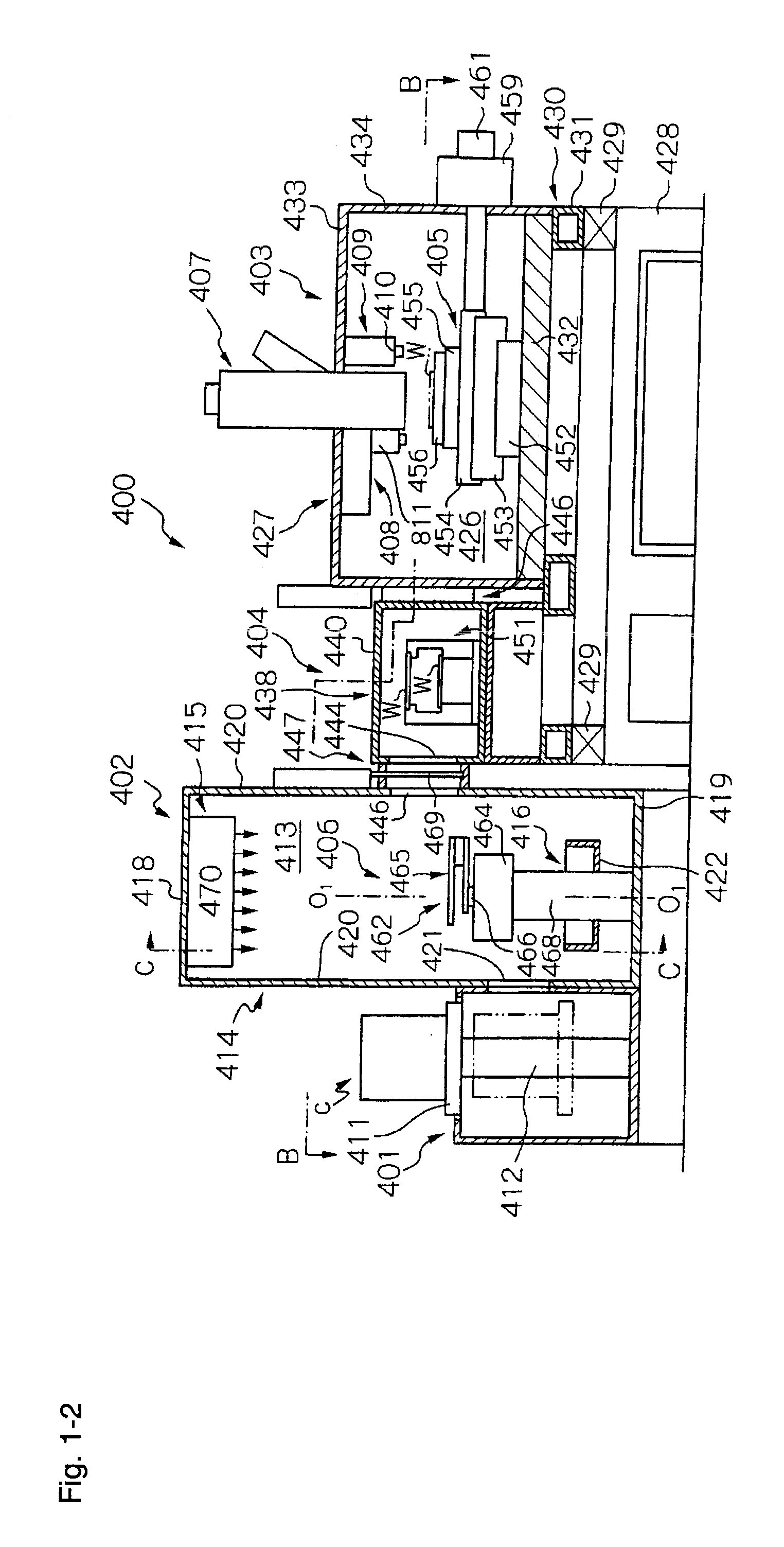Detector and inspecting apparatus
- Summary
- Abstract
- Description
- Claims
- Application Information
AI Technical Summary
Benefits of technology
Problems solved by technology
Method used
Image
Examples
first embodiment
[0149]FIG. 3 is a diagram schematically showing the inspecting apparatus according to the present invention, which comprises a detector having an electron sensor and a detector having an optical sensor both contained in a single chamber. In FIG. 3, a CCD detector 11 and a TDI detector 12 are disposed within a vacuum chamber MC such that an EB-CCD (electron bombardment charge coupled device) sensor 13 of the CCD detector 11 is positioned closer to a sample. In FIG. 3, the CCD detector 11 and TDI detector 12 have their electron incident plane perpendicular to the drawing. The EB-CCD sensor 13 is supported such that it can be translated in the left-to-right direction in the figure by a moving mechanism M disposed outside of the vacuum chamber MC. In this way, the EB-CCD sensor 13 can be selectively moved to a position at which it receives an electron beam e, and to a position at which it directly applies the electron beam e into the TDI detector 12, thus making it possible to selective...
third embodiment
[0156]FIGS. 5(A)-5(C) schematically shown an inspecting apparatus according to the present invention, where (A) is a view taken from the front, and (B) and (C) are views taken from one side. As shown, the moving mechanism M in this embodiment utilizes rotational movements rather than movements in one axial or three axial directions. It should be noted that the TDI detector 12 does not comprise the MCP because the electron amplification is not needed in this embodiment.
[0157]In FIG. 5(A), one end of a rotary shaft 21 is coupled to one end of a flat EB-CCD sensor 13 which contains required circuits, substrates and the like, while the other end of the rotary shaft 21 is coupled to the moving mechanism M. FIGS. 5(B) and 5(C) are views of the configuration shown in FIG. 5(A), taken from the side closer to the moving mechanism M. When the CCD detector 11 is used, the EB-CCD sensor 13 is moved such that the sensor plane thereof is perpendicular to the electron beam e, thus causing the elec...
fifth embodiment
[0165]In the embodiment so far described, the mechanism for switching the CCD detector 11 and TDI detector 12 utilizes mechanical movements. In contrast, FIG. 7 is a diagram schematically showing an inspecting apparatus according to the present invention, where an electronic deflector is utilized for a switching mechanism. While this embodiment also uses a single CCD detector 11 and a single TDI detector 12 by selectively switching them, the CCD detector 11 is placed out of the optical axis (trajectory of an electron beam e) at a predetermined angle to the optical axis, as shown. Also, a deflector 41 is disposed on the optical axis for switching the trajectory of the electron beam e between the CCD detector 11 and the TDI detector 12. The deflection angle of the deflector 41 is preferably in the range of 3 to 30°. This is because excessive deflection of secondary beam would result in distortions in a two-dimensional image and larger aberration.
[0166]In this embodiment, the EB-CCD se...
PUM
 Login to View More
Login to View More Abstract
Description
Claims
Application Information
 Login to View More
Login to View More - R&D
- Intellectual Property
- Life Sciences
- Materials
- Tech Scout
- Unparalleled Data Quality
- Higher Quality Content
- 60% Fewer Hallucinations
Browse by: Latest US Patents, China's latest patents, Technical Efficacy Thesaurus, Application Domain, Technology Topic, Popular Technical Reports.
© 2025 PatSnap. All rights reserved.Legal|Privacy policy|Modern Slavery Act Transparency Statement|Sitemap|About US| Contact US: help@patsnap.com



